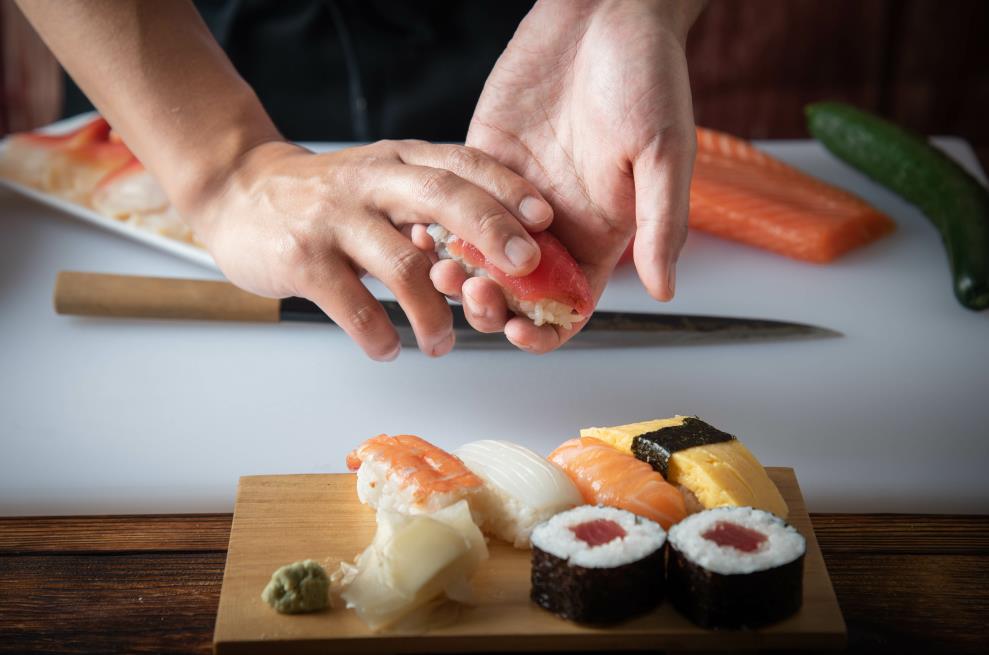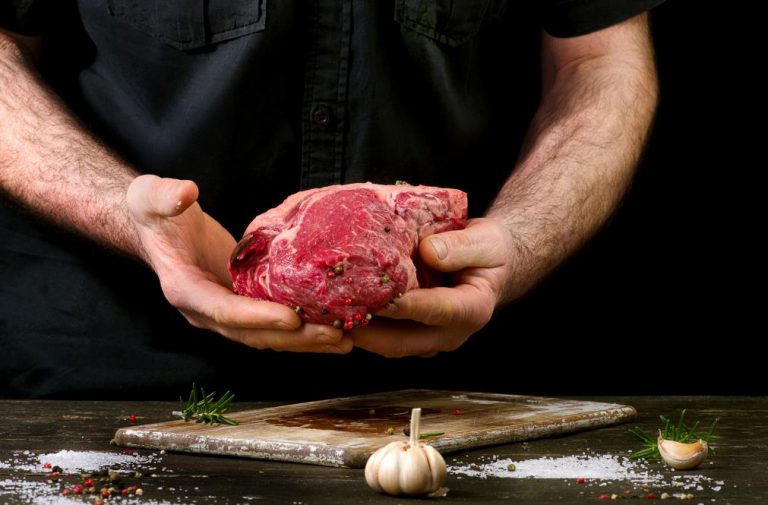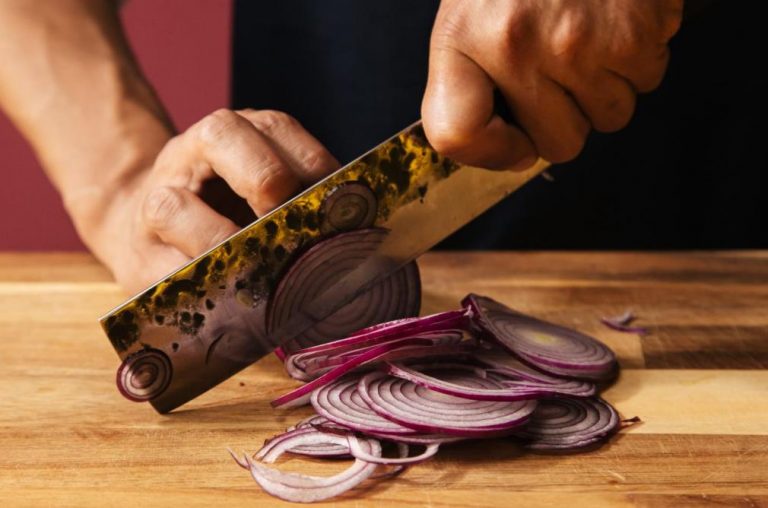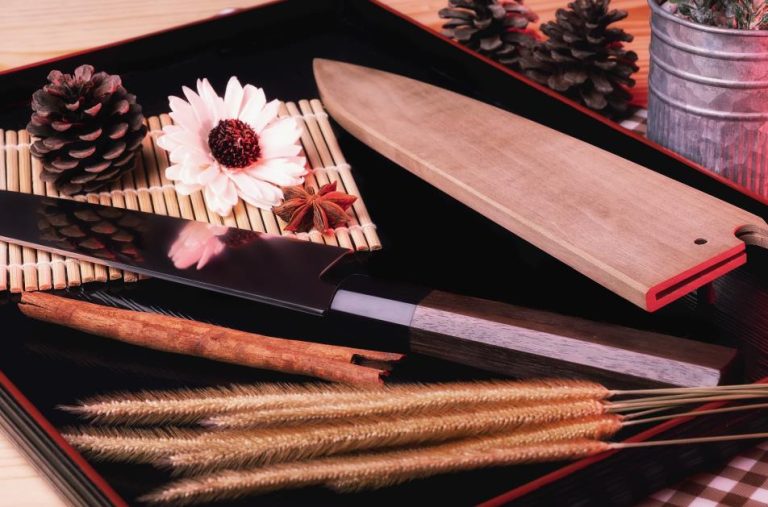Surrounded by ocean and with a livestock production in the trillions of yen annually, all protein in Japanese need to be cleaned, trimmed, deboned, portioned, and served up, and this is where knives born of the best Japanese traditions shine.
In this article we’re going to look at two of Japan’s finest creations, the Sujihiki carving knife and the Yanagiba sushi knife. Although similar in many respects these knives each have their own qualities to tempt the buyer and we’re going to discuss them, compare them and see how each of these bladed masters fit into today’s knife market.
If you have a discerning and quality driven clientele, you’ll be confident in providing Japanese knives to your buyers as they can’t be beat in terms of beauty, materials, production standards and kitchen performance.
Let’s start with a good grounding in the basics of both types of Japanese knife and go on from there.
What is a Sujihiki knife?
The Sujihiki knife is the Japanese version of a Western carving or meat cutting knife. Like all Japanese knives it excels in both sharpness and precision and its primary function is to trim, slice, and portion meat proteins without thick bones. The Sujihiki can also be used for fish proteins which gives it some commonality with the other knife we’ll be discussing, the Yanagiba.
In form the Sujihiki knife is often made from carbon steel which is in modern times an advanced and high – quality type of steel for knife making.
Sujihiki knife design
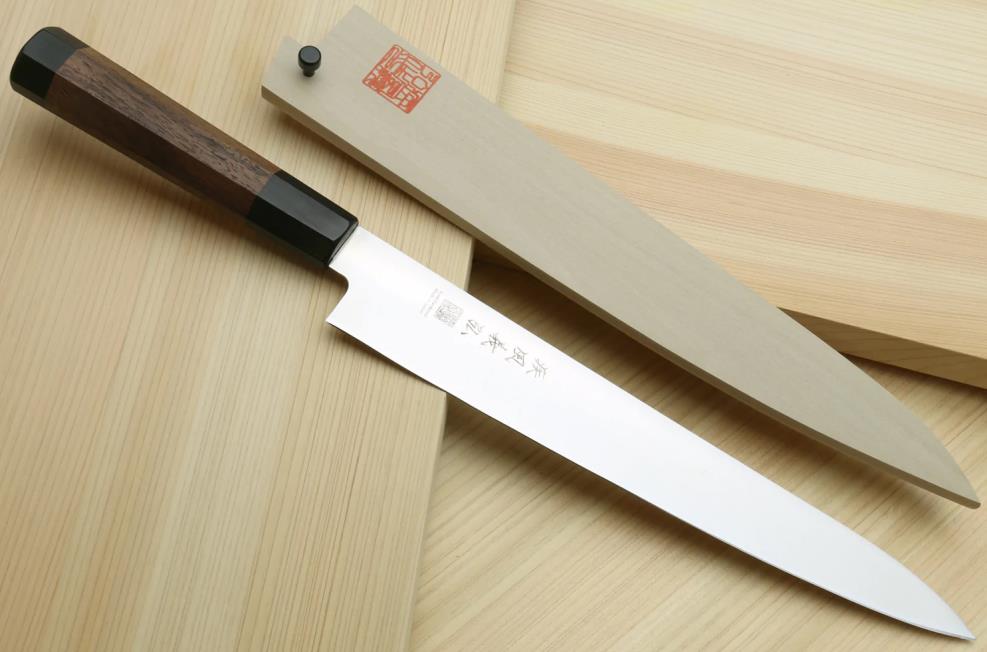
The Sujihiki is a LONG knife, measuring 8 to 14 inches usually. The purpose of its length is to cover big pieces of meat effectively and get one continuous slice across a large joint, of beef for example.
The Sujihiki is a thin bladed knife, and usually double beveled. This means that it has two edges to the side of its blade, making it less finicky to use and sharpen for customers who are used to using Western style meat slicing knives.
As far as most popular sizes sold goes, those would be the 9.5 inch; 10.5 inch and monster 12 – inch Sujihiki.
The beauty of the Sujihiki design, being long and thin, means that a neat, consistent, and thin slice of meat can be achieved every time. This is important for presentation and ease of use, particularly where large volumes of meat are being carved and sliced daily, like in a delicatessen.
Because it’s a double bevel knife, the Sujihiki is appropriate for both left – handed and right – handed users and customers can have a sense of familiarity with the cutting action as it’s so like that used for a Western style meat knife.
Sujihiki cutting style
The Japanese favor a ‘draw cutting’ motion for the Sujihiki knife, where the pressure is applied from the heel of the knife to the tip in one fluid motion. This technique is easily learnt.
Some users regard the Sujihiki as an ‘extra – long utility knife’ and this is a good way to describe its application in the kitchen.
Because the Sujihiki doesn’t have a lot of height to the blade its design doesn’t suit an up and down chopping motion as one’s knuckles would bang against the cutting surface. For this reason, the user should either use a draw cutting method OR just move the cutting board to the very edge of their work surface, giving their knuckles unimpeded space to move.
Sujihiki knives are available with either Western style handles or Japanese style ‘wa’ handles, depending on the taste of the buyer.
The shape of a Sujihiki blade is fantastic on meat as we’ve said, but it also translates well into a good fish slicer for things like sushi and sashimi.
Let’s go more in depth on what the Sujihiki knife can be used for.
Best uses for the Sujihiki knife
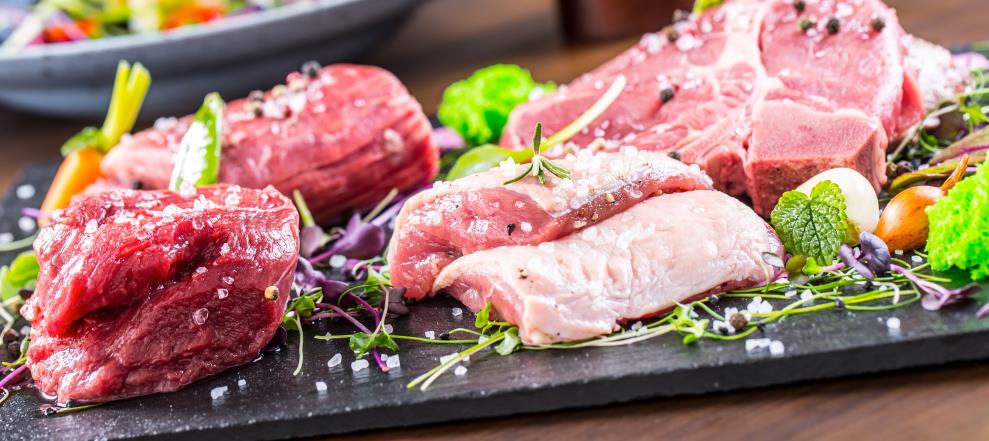
- Deli meats and charcuterie: things like pastrami, prosciutto, salamis, and hams
- Hotpot dishes where very fine slices of meat are the star
- Japanese teriyaki cuisine where meats and fish are thin sliced
- The preparation of sandwiches like the Philly Cheesesteak
- Barbeque pits and outdoors meat grilling
- Roasted meat carvery: joints of beef, lamb, pork, briskets or rolled hams
- Dried meat/fish products (jerky)
- Cutting up large pieces of either meat or fish into manageable portions
- Sashimi and sushi preparation, particularly sushi rolls
What not to use a Sujihiki knife for
As the best Sujihiki knives are made from carbon steel, you wouldn’t want to use them on large bones or hard seafood shells as this could lead to chipping or micro chipping of the blade’s edge.
For heavy cutting through carcasses or disjointing of dense meat with bones, the heavier cleaver would be a far more appropriate tool.
Now let’s look at a contemporary of the Sujihiki knife, its very similar ‘cousin’ the Yanagiba, the Japanese fish slicing pro!
What is a Yanagiba knife?
The Yanagiba knife is Japan’s raw fish knife, it’s used only for the preparation of dishes like sushi and sashimi. The name ‘Yanagiba’ means ‘willow leaf blade’ and this well describes its long and tapering shape.
Yanagiba knife design
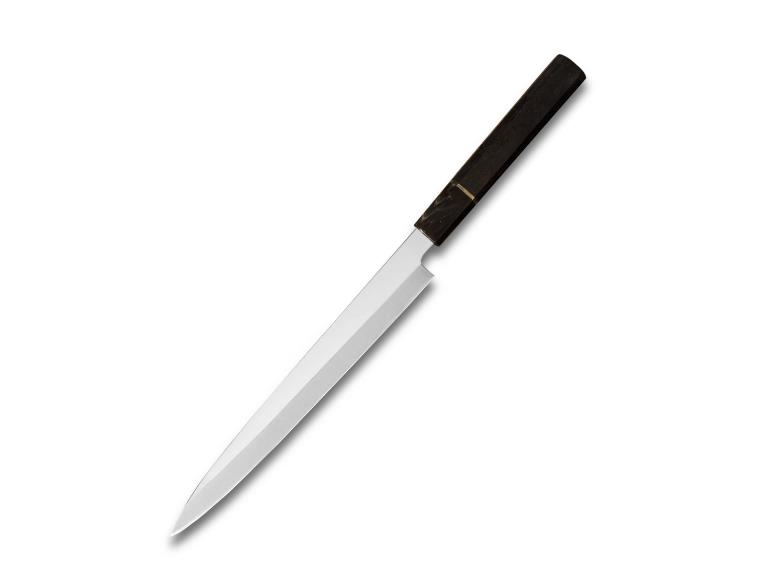
Like the Sujihiki knife, the Yanagiba is also long and thin in shape and made commonly from carbon steel. A Yanagiba will usually measure 8 to 14 inches in length.
The Yanagiba has a sleek and pointy shape to the blade, somewhat like a shark. It’s a single bevel knife meaning it has only 1 edge to the blade. Its long blade allows this knife to move in one ‘draw cutting’ motion through even a very large fish like a giant salmon. Precision cuts using this technique mean that less energy is used by the chef and less precious fish flesh is wasted!
The single bevel nature of the Yanagiba does need getting used to though for users unfamiliar with single bevel knives, and it’s important that the customer gets a single bevel knife suited to their handedness or they may struggle with the knife steering to one side as they cut.
The Yanagiba, like the Sujihiki knife is extremely sharp. This is crucial for working with raw and very expensive fish or seafood ingredients as it allows the knife to glide through delicate flesh and muscle fibers without causing damage to the cellular structure.
This is critical to both the serving size cut and the presentation and accuracy of the work done by the sushi or sashimi chef. With premium ingredients being incredibly expensive and fragile, these chefs need to portion with minute detail and attention to the structure of the ingredient they are slicing.
Today Japanese knife makers like to conform to Western tastes by offering Western style handles on Yanagiba, but the traditional ‘wa’ handle for the Yanagiba is also available, it all depends on what look and what feel in the hand the customer is looking for.
Best uses for the Yanagiba knife
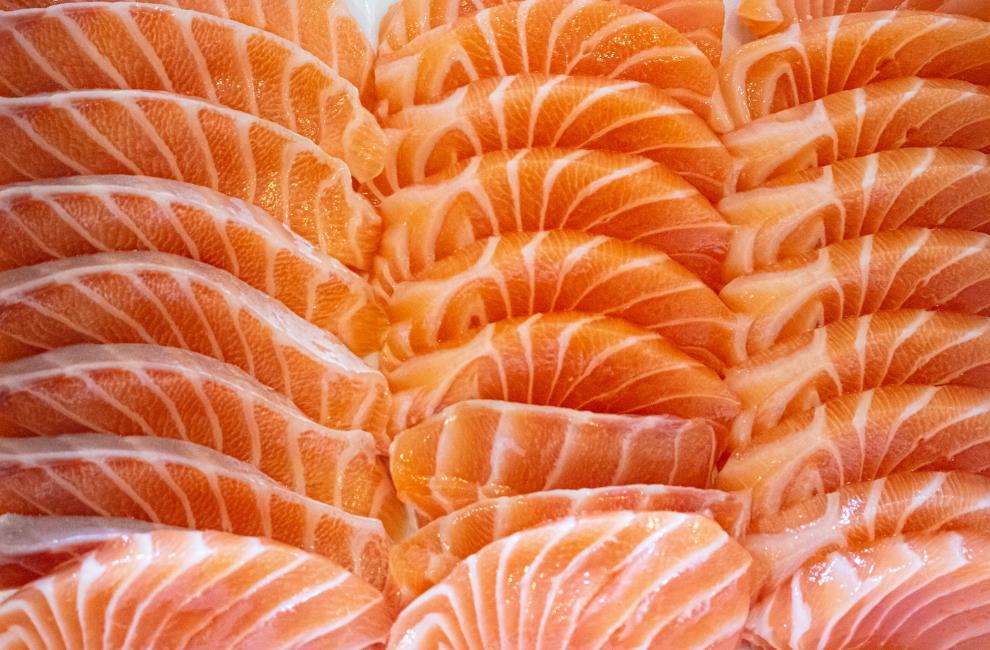
This knife was designed with raw fish in mind. Its application is seen in dishes like sashimi, sushi, nigiri, maki rolls and so on.
The Yanagiba is a ‘full service’ knife meaning that it can take the sushi chef from skinning, trimming, and breaking down a fish to slicing that same fish into paper thin slices for eye pleasing display that tempts the palate.
With a surgically precise blade the Yanagiba can process a whole fish from head to tail with MINIMAL waste, this is so important in restaurant economics and to maintain healthy profit margins.
The speed at which the Yanagiba wielder works also maintains the freshness and flavor of luxury species of fish that sell for eye – watering prices.
Buy Wholesale Knives and Start Scaling up with Us Today
Contact us and connect with a sales rep to get a free quote.
The Sujihiki knife and the Yanagiba knife compared side by side!
| FEATURE | SUJIHIKI KNIFE | YANAGIBA KNIFE |
| Country of Origin | Japan | Japan |
| Material | Carbon or stainless steel | Carbon or stainless steel |
| Blade Length | 8 to 14 inches | 8 to 14 inches |
| Blade Shape | Long, thin, and narrow in width | Long, thin and tapering |
| Weight | Varies but lighter than Yanagiba | Varies but thicker spine so heavier than Sujihiki |
| Bevels | Double beveled | Single beveled |
| Non – Stick Blade | Yes, if Granton edged | Yes, ‘ura’ concavities on back of the blade |
| Primary Usage | Meats mainly but can be used for other prep tasks | Raw fish preparation |
| Versatile? | Yes, can cut meat, fish, veg and herbs | No – raw fish only |
| Type of Handle | Western or Japanese | Western or Japanese |
| Ease of Use | Easy | Can be difficult for novice or user unfamiliar with single bevel knives |
| Ease of Sharpening | Easy, very similar to Western knife sharpening | Sharpening slightly tricky and requires proper technique |
Other Japanese fish knives
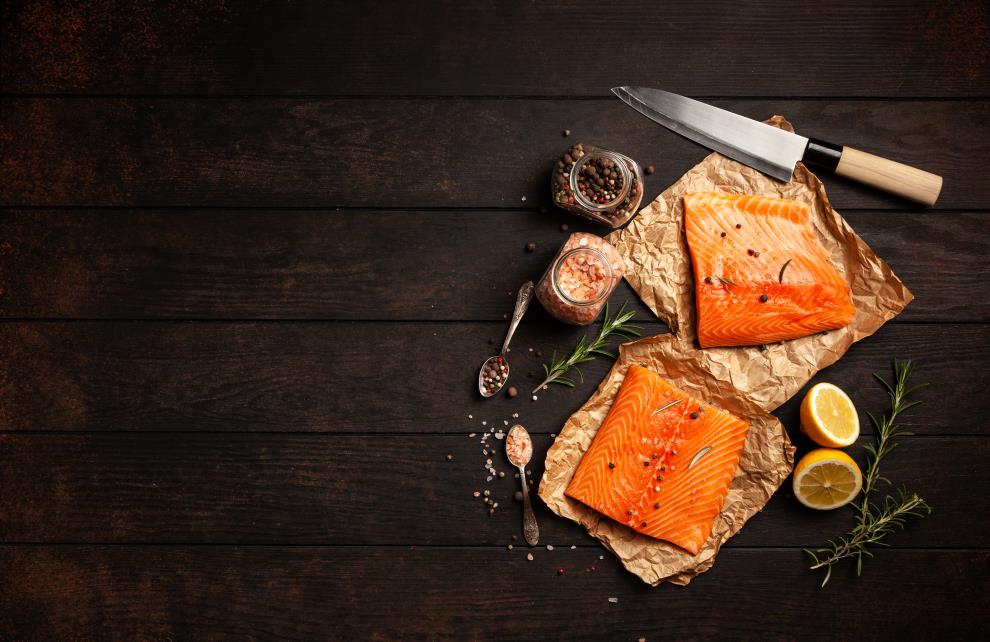
The Deba knife
The Deba or Deba Bocho is a single bevel knife that measures 6 to 12 inches, it can get very big! This knife has a thick spine and a heavy blade which allows it to sail through whole fish. The blade has a slightly curved edge profile with a pointed tip to it.
The Kiritsuke knife
The Kiritsuke is a single or double bevel knife that measures 9.5 to 13 inches. The most popular size Kiritsuke is probably the 10.5 inch as this is a good alternative knife to the Japanese Gyuto. In fact, the Kiritsuke is seen as a cross between the Yanagiba knife and the Gyuto knife.
This knife has an almost straight blade edge with a clipped point tip to it and can be used for slicing fish, cutting vegetables, and slicing boneless softer proteins like chicken.
The Takobiki knife
The Takobiki knife is a single bevel knife that measures 10.5 to 13 inches, it’s very closely related to the Yanagiba. It has a long, narrow rectangular blade with a squared off blunt tip.
The Takobiki is used both for sashimi and for slicing rubbery octopi and squid.
Are the Sujihiki and Yanagiba knives good choices for a knife store?

If you’re purchasing stock from LeeKnives, you can rest assured that both our Sujihiki and Yanagiba knives are of good quality and engineered to stand the test of time.
From a quality viewpoint, these two knives can only add luster to the knife seller’s range of products.
In terms of the Sujihiki knife you’re providing a world class knife specifically made for meat slicing and carvery: something that every meat lover needs and would want in their toolbox of kitchen essentials. As well as purely meat, the Sujihiki offers some versatility as a general – purpose chopping knife too!
Buy Wholesale Knives and Start Scaling up with Us Today
Contact us and connect with a sales rep to get a free quote.
For the professional sushi and sashimi chefs or fish processing plant, the Yanagiba is essential to the performance of their job, it’s something they simply must have.
This need also spills over to the home sushi enthusiast or customer that likes to process their own fish for consumption. With healthier living more and more popular, a lot of people are turning to a fish – based diet and this is where the Yanagiba outshines any other type of knife available.
Both knives have quite specific functions and although looking similar they offer something quite unique and desirable to the buyer.
This makes both the Sujihiki and the Yanagiba great additions if you want to showcase the best in international knife making available today.
In conclusion
We’ve so enjoyed this comparative look with you at the Sujihiki and Yanagiba varieties of Japanese kitchen knife.
Do explore some more on the LeeKnives blog where we offer interesting articles and practical resources to help your knife business and products knowledge along.
Need a quick no fuss quote? We’d love to help you out with that too, so do visit our quote portal. We wish you well until we meet again dear reader!
